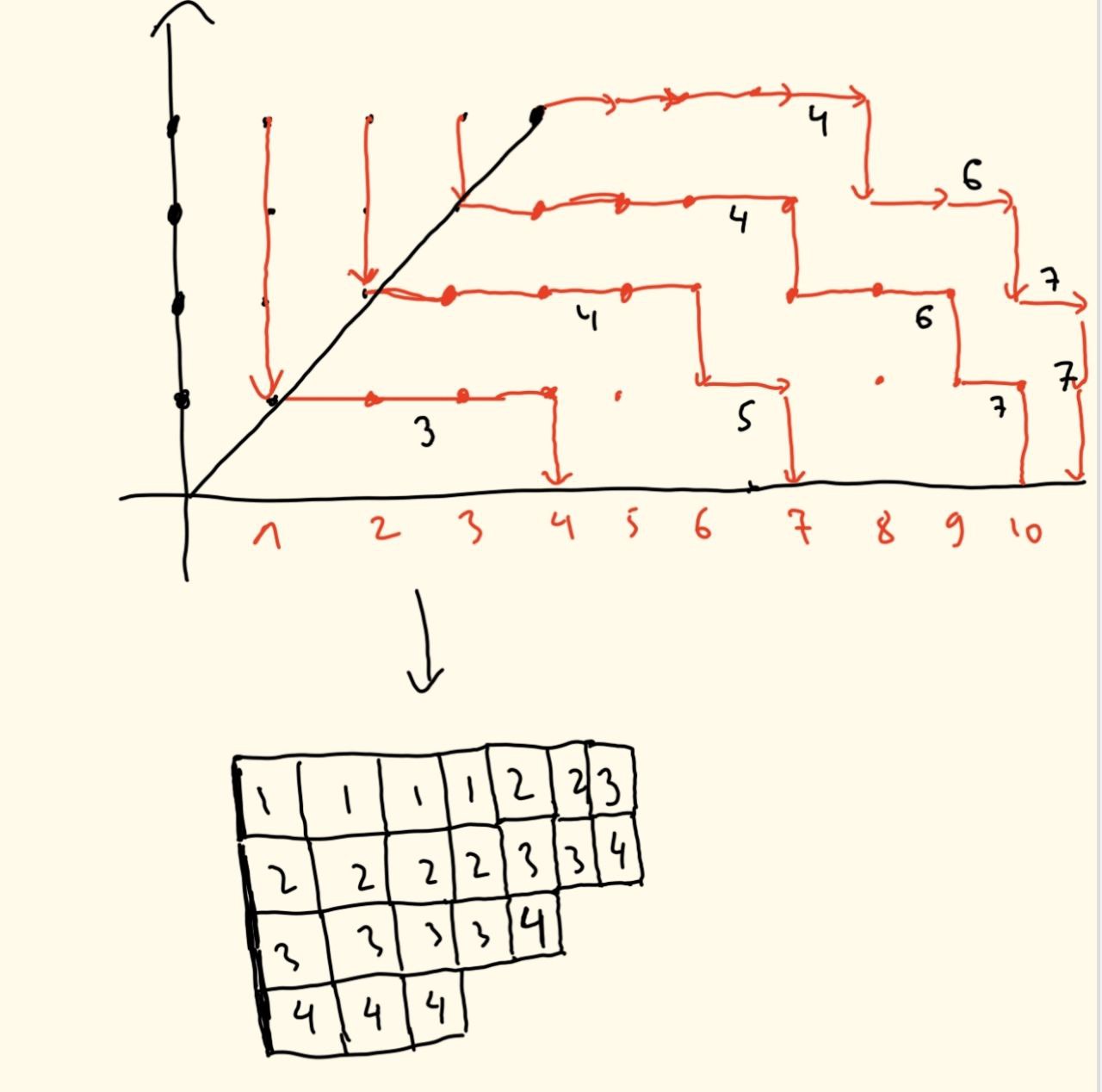The non-trivial part of the following argument is due to Fedor Ushakov (for that he gets A at my symmetric functions course).
The hamster from $(i,n)$ goes to south to $(i,i)$ for sure, otherwise their paths intersect. This already has probability $(1-p)^{{n\choose 2}}$.
After that let the last point of thewe make a semistandard Young tableaux $i$-th hamster in the horizontal line$T$ with at most $(\cdot,j)$$n$ rows and entries between 1 and (where$n$ $j=1,2,\ldots,i$) have coordinates(denote by $(j,i+f(i,i+1-j))$. Then$\lambda(T)$ the function $f(x,y)$ increases both in $y$shape of (since they go only to south and to east$T$) and in $x$ (the pathsfrom our collection of paths as follows: the hamster who is now at $i$-th and$(i,i)$ is responsible for the $(i-1)$$(n+1-i)$-th hamsters do not intersect iff $i+f(i,i+1-j)>(i-1)+f(i-1,(i-1)+1-(j-1))$, equivalently, $f(i,i+1-j)\geqslant f(i-1,i+1-j)$, for allrow $j=2,\ldots,i$(which may be empty). And viceversa, any such increasing function $f$ corresponds to: when he makes a collection of disjoint paths. For givenmove to east being in the horizontal line $f$$(\cdot,j)$, he adds a box with the number $n+1-j$ to this row, see an example.
The hamsters make $\sum_{i=1}^n f(i,i)$$|\lambda(T)|$ moves to east and $1+2+\ldots+n=n+{n\choose 2}$ moves to south, thus the probability of this equals $p^{\sum f(i,i)}(1-p)^{n+{n\choose 2}}$$p^{|\lambda(T)|}(1-p)^{n+{n\choose 2}}$. We want to prove that the sum over all Young tableaux $f$$T$ with at most $n$ rows and entries not exceeding $n$ equals $(1+p)^{-{n\choose 2}}$. This is equivalent to the formula $$ \sum_f p^{\sum f(i,i)}=(1-p)^{-n}(1-p^2)^{-{n\choose 2}}. \tag{$\clubsuit$} $$
The below proof of $(\clubsuit)$ is due to Fedor Ushakov.$$ \sum_T p^{|\lambda(T)|}=(1-p)^{-n}(1-p^2)^{-{n\choose 2}}. \tag{$\clubsuit$} $$
Note that RHS of $(\clubsuit)$ is the generating function of the sum of elements of symmetric $n\times n$ matrices $A$ with non-negative integer elements: $$ (1-p)^{-n}(1-p^2)^{-{n\choose 2}}=\sum_{A=(a_{ij})}p^{\sum a_{ij}} $$ (each diagonal element corresponds to $(1-p)^{-1}$, each pair of symmetric off-diagonal elements to $(1-p^2)^{-1}$). The bijection from matrices $A$ to functions $f$ is based on RSK. The latter makes from $A$ a semistandard Young tableaux $\lambda$ with $\sum a_{ij}$ boxes and positive integer entries not exceeding $n$.
Now let $f(x,y)$ for $n\geqslant x\geqslant y\geqslant 1$be the number of elements not exceeding $n-x+y$ in the row number $n+1-x$ (where the first row is the longest, and the elements in every column strictly increase). This $f$ is non-strictly increasing both in $x$ and $y$, defines the semistandard Young tableaux uniquely, and the sum of $f(i,i)$$T$ is the number of boxesprovided by RSK.

